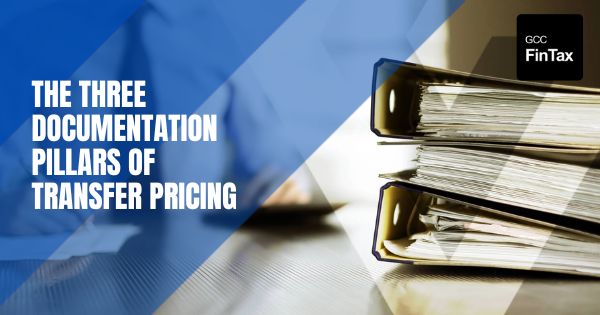
As the cross border business is growing with leaps and bounds in today’s digital world, the transactions within Multi-National Enterprises (MNEs) are also increasing. Therefore, the importance of maintaining the Arm’s Length Price (ALP) among cross-border Related PartyTransaction also arises. The Transfer Pricing documentation is one of the main armours for MNEs to defend themselves against possible Tax Litigation, as it demonstrates that these transactions are undertaken at ALP. On the other hand, Tax Authorities lack quality data for measuring fiscal and economic effects of tax avoidance.
Therefore, there is a need to have a global standard for Transfer Pricing Documentation. But what are the global requirements that one MNE shall have to be Transfer Pricing documentation compliant. In this article we are going to walk you through about three documentation Pillars of Transfer Pricing that are required by any MNE to be Transfer Pricing Compliant in any Jurisdiction.
The lack of quality and standardised data on corporate taxation has been a major limitation to measuring the fiscal and economic effects of tax avoidance, making it difficult for Tax Authorities to carry out Transfer Pricing assessements on transactions between linked companies and even more difficult to carry out audits.
OECD has recommended a solution to try to eliminate this issue. According to the recommendations, MNEs must comply with the three-tiered Transfer Pricing documentation requirements, these are:
The three-tiered documentation results in substantially more information disclosure on MNEs, as the tax authorities are provided with more holistic view about the functioning of the MNE’s business. MNEs are required to disclose their global operations and TP policies in the Master File, whereas they are also required to document about each aspect of the transactions within the jurisdiction through Local File, also CbC report gives an idea to Tax Authorities about the various financial parameters of the MNE. This approach gives tax authorities unprecedented transparency on MNEs’ global TP policies. Hence, while preparing their TP policies, MNEs need to have a global perspective and not an individual country-centric view.
The master file provides a global overview of the MNE’s Transfer Pricing. It includes high level information about the company’s global operations and transfer pricing policy. The information that should be included in the master file.
The master file is compiled at the enterprise level, typically the parent company. The OECD guidelines suggest that the master file be made available to tax authorities in the jurisdictions where the MNE has business operations and many tax authorities have adopted the master file as a requirement in their own legislation.
What’s most important in preparing the master file, aside from including the required documentation, is avoiding risk. Discrepancies or contradictions between information in the master and local files increase audit risk, so it’s critical to make sure the descriptions that are provided in the files are consistent.
The local file preparation is specific to each country to document the activities of the business units operating in that specific jurisdiction. The local file provides detailed information about the local company’s intra-company transactions. Local files are filed with the tax authority for the jurisdiction.
The information that should be included in Local File are:
The information Requirement for every country may be different from what is recommended by OECD, difference may be that the specific jurisdiction may require additional information or have unique stipulations as to how the information is presented.The local file is to be filed locally and it is recommended that it be finalised by the filing date for the local tax return.
The CbC report is required to set outspecified financial data of the Group by tax jurisdiction in a prescribed template. Additionally, a list of constituent entities by country of residence with indication of their activities are to be reported. ‘Constituent Entity’ is defined as any separate business unit of the group, including companies together with permanent establishments that prepare separate financial statement for any purpose (including management control and tax compliance).
The Information that is required to captured in CbC Report for all Constituent Entity are:
MNEs with annual consolidated group revenues of or above Euro 750 million in the previous fiscal year, are required to file CbC Report. CbC template is intended to be used for risk assessment purposes only. CbC report is not a conclusive evidence on whether transfer prices are appropriate or not.
The information provided in CbC report is confidential and is not a Public document, it has to be prepared at group level and CbC report is exchanged through Government to Government information exchange program involving various sharing mechanisms.
Conclusion: The three-tiered documentation provides Tax Authorities with quality and definitive information about the MNE’s business. Further, it ensures consistent information across different jurisdictions to interpret the right conclusions out of the information provided in documentations. The Three-tiered documentation also provides MNEs with an opportunity to consistently implement its Transfer Pricing Policies across different jurisdictions to ensure effective management.
Disclaimer: Content posted is for informational & knowledge sharing purposes only, and is not intended to be a substitute for professional advice related to tax, finance or accounting. The view/interpretation of the publisher is based on the available Law, guidelines and information. Each reader should take due professional care before you act after reading the contents of that article/post. No warranty whatsoever is made that any of the articles are accurate and is not intended to provide, and should not be relied on for tax or accounting advice.
You can access Law including Guidelines, Cabinet & FTA Decisions, Public Clarifications, Forms, Business Bulletins for all taxes (Vat, Excise, Customs, Corporate Tax, Transfer Pricing) for all GCC Countries in the Law Section of GCC FinTax